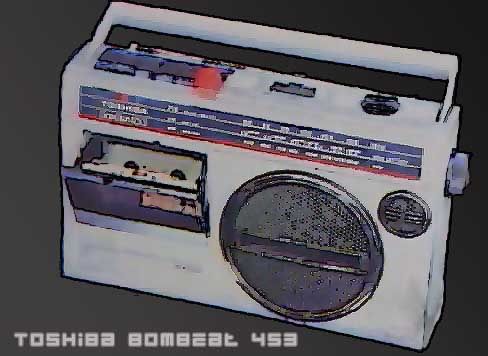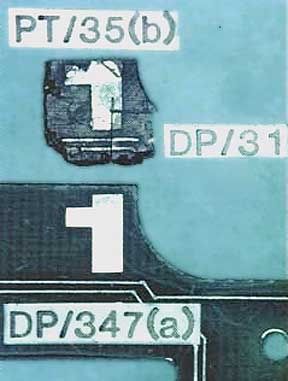May 30 2010
Marwan Abd Rezak Mufti Khreesat has a long and unusual career as a bomb-maker spanning nearly two decades. He was employed by the radical babykillers Popular Front for the Liberation of Palestine, General Command (PFLP-GC) in two distinct phases with a long pause between – the early 1970s and mid-late 1980s, culminating with the “Autumn Leaves” operation a few weeks before the bombing of Pan Am Flight 103.
His formula, the Khreesat magic, was to wire a barometric switch to a plastic explosive IED hidden inside consumer electronics. The result was altimeter bomb, triggered by falling air pressure, revolutionizing airline terrorism. It avoided a problem with timers on much-delayed flights – this would not blow until airborne, maximizing the chance of mass fatalities.
Emerson and Duffy reported in a 1990 book that “according to Israeli intelligence files, it is almost certain that Jibril [the PFLP-GC], in 1970, was responsible for the very first plane bombing carried out with a barometer-triggered explosive,” and the bombs were built by Khreesat. [1] Two flights from Europe to Israel were bombed the same day (February 21) with radio-based IEDs. These first two were gotten onto the plane by being sent as Air Mail to Israel – so the carriers, not the bombers, chose the flights that would be hit. [1] One of these killed no one, and the other left none alive.
An Austrian airliner (Australian per Emerson and Duffy) from Frankfurt to Vienna and then Tel Aviv, Israel, detonated at 10,000 feet. All 38 aboard survived, following an emergency landing at Frankfurt. [1] But the same day, Swiss Air Flight 330 “blew up 15 min after leaving Zurich for Tel Aviv,” Emerson and Duffy wrote, at an altitude of 14,000 feet. [1] The pilots tried to re-land, but thick smoke and then power failure caused them to crash in the woods at Würenlingen. All 47 people on board perished. [2]
A German-language appendix to a report (sent to me by Edwin Bollier) is quite informative. It disagrees with the above specifics – the airport is about 1,400 feet above mean sea level, and the approximate trigger altitude is shown as 3,500 feet MSL, with the detonation coming perhaps one minute later, at 4000 feet (2610 above the airport). It was apparently not a powerful bomb, it’s almost a fluke that it worked to such deadly effect. The bulky altimeter was recovered pretty much intact (shown at left). [3]
Khreesat’s work struck again on August 16 1972, with an El Al flight from Barcelona to Tel Aviv. The altimeter bomb this time was powered by 250 grams ammonium nitrate hidden in a Phillips record player. This had beengifted by a terrorist to a young British lady. This was in her luggage in the rear hold when it detonated at 14,700 feet. [4] The cabin floor was damaged, but the plane was fine and re-landed safely with some injuries but no deaths. Two men she’d met were arrested and said they given the bomb by Khreesat in Yugoslavia. [1]
Having been compromised, it makes sense that, as the Mossad says Khreesat left the PFLP-GC in 1973, perhaps just laying low as their secret weapon. [4 Leppard p. 8] However later events suggest he became an asset for Jordanian intelligence, GID, presumably during this long downtime. But no more such bombings happened from the PFLP-GC, and the threat faded over more than a decade.
In general, his first three bombs showed an inventive approach that made sure a plane was airborne before detonating. They did not however wait until the plane was way up there. The early triggering allowed for a safe return. Further, some combination of inadequate explosives and random placement in luggage yielded high failure rates. If such a bomb could wait longer to detonate, blow harder, and be placed nearer the hull, it could kill an airplane. All three problems wound up being solved, one way or another, for the next try against Pan Am 103.
And developments in air ravel after 1970 would solve another problem – low death tolls even with success. Companies like Boeing and Airbus would answer that in sevens and by 1988 and give both the US Navy and the PFLP-GC hundreds to kill at a time.
---
Next: Part Two
---
Sources:
[1] Emerson, Steven and Brian Duffy “The Fall of Pan Am 103: Inside the Lockerbie Investigation” New York, G. P. Putnam’s Sons. 1990. 304 pages. pp 114-116.
[2] Wikipedia. Swiss Air 330. http://en.wikipedia.org/wiki/Swissair_Flight_330
[3] Beilagen Über den unfall Des Swissair-Flugzeuges Convair Convair 30 A (CV-990 A <
[4] Leppard, David.On the Trail of Terror: The Inside Story of the Lockerbie Investigation. London, Jonathan Cape . 1991. 221 pages. Page 8.










